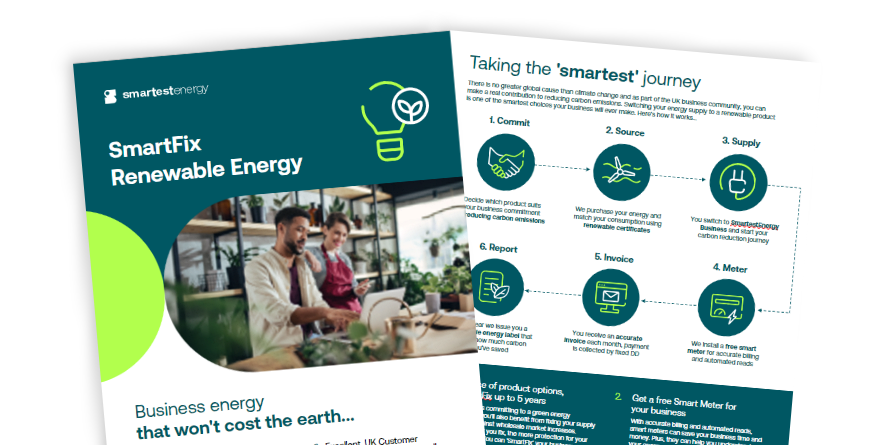Understanding how your electricity is generated is crucial for reporting carbon emissions and showcasing sustainability. We provide a detailed fuel mix for our conventional products and our renewable products, ensuring transparency about your energy supply.
The charts below show our fuel mix for April 2023 to March 2024. Data for April 2024 to March 2025 will be available late 2025.
Renewable Product Fuel Mix
Our renewable products are powered by clean generation including natural sources such as wind, solar and hydro. Every megawatt hour we supply to customers on our renewable products is backed with a renewable origin certificate, independently verified by The Carbon Trust.


Renewables: Biomass 54%, Hydro 42%, Solar 4%. Scope 2 emissions: 0 gCO2/kWh. Total radioactive waste: 0 g/kWh.
Conventional Product Fuel Mix
Once we have allocated our renewable fuel across the products above, what remains is the residual fuel mix for our conventional products, which is predominantly from grid sources.


Conventional: Natural Gas 68%, Coal 15%, Nuclear 11%, Other 7%.
Environmental impact of energy sources relating to our fuel mixes, and displayed on other websites:
All energy sources have some impact on the environment, but to varying degrees. As the net zero transition and the shift to natural renewable energy sources (wind, hydropower and solar) convey – there’s a need to move away from fossil fuels (e.g. coal, oil and natural gas), which do substantially more harm than renewable sources.
So what are the kinds of environmental impact energy sources can have?
Impacts are far ranging and can include air and water pollution, damage to public health, wildlife and habitat loss, water use, land use, and global warming emissions. The intensity of the impact, as well as the type of impact, depends on the specific technology used, the location of the energy assets , and a number of other factors.

 United States
United States Australia
Australia





